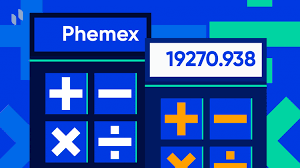Blockchain protocols aren’t just tech jargon—they’re the unseen rules fueling trust and chaos in crypto. What really makes them tick?
Blockchain protocols have taken the tech world by storm, but what exactly are they? If you’re scratching your head over this buzzword, you’re not alone. Simply put, blockchain protocols are the rules and structures that govern how data is recorded, validated, and shared across the blockchain network.
Think of a protocol as the operating manual for blockchain systems. Without these manuals, the entire blockchain concept would be chaos—no agreement on transactions, no security, just a mess of data flying around. As Vitalik Buterin, co-founder of Ethereum, puts it, Protocols are like the software that everyone runs to cooperate and build something bigger than any individual.
That cooperation depends on strict rules that keep everything honest and reliable.
What Makes a Blockchain Protocol Tick?
At the core of blockchain protocols are consensus mechanisms. These mechanisms ensure all the participants, or nodes, agree on the state of the blockchain without any central authority. The most well-known consensus methods are Proof of Work (PoW), Proof of Stake (PoS), and directed acyclic graphs (DAGs).
Proof of Work (PoW) is the original system made famous by Bitcoin. It requires miners to solve complex puzzles that use a ton of computing power—yes, your computer turning into a hot brick to keep Bitcoin safe. It’s secure and tested, but many groan over its environmental impact and slowness.
On the flip side, Proof of Stake (PoS) flips the script. Instead of solving puzzles, validators get picked based on the amount of cryptocurrency they hold and lock up as a stake. This method consumes way less energy and tries to speed things up. Ethereum’s switch to PoS was a big deal, confirming PoS’s rise in blockchain protocols.
Then there’s the Directed Acyclic Graph (DAG) approach, favored by projects like IOTA. DAGs don’t rely on blocks and chains in the traditional sense. Instead, they use a graph structure for transactions that can run concurrently, aiming to boost scalability and reduce fees. It’s a fancy way of saying, they want to make blockchain fast and cheap.
Layer-0 Protocols: The Game Changers
Beyond consensus mechanics, there are also category busters called layer-0 protocols. You might have heard names like Cosmos and Polkadot. These protocols don’t just build individual blockchains; they create ecosystems of blockchains that can talk to each other.
Cosmos calls itself the “Internet of blockchains.” It uses something called the Inter-Blockchain Communication (IBC) protocol to connect diverse blockchains, tackling the annoying problem of blockchain isolation. Imagine a bunch of blockchains in silos, unable to share information or assets. Cosmos breaks down the walls.
Polkadot, similarly, builds what some call a “relay chain” connecting various specialized parachains. This cool design allows for interoperability and shared security, helping blockchains avoid being islands.
As Polkadot founder Gavin Wood says, We’re rebuilding the internet with a web that works for everyone.
That might be a lofty goal, but it shows what layer-0 protocols aim to achieve: a broader, more integrated blockchain universe.
Why Should You Care?
If you thought blockchain is just buzz for cryptocurrencies, think again. The protocols behind them set the foundation for all kinds of innovations—finance, supply chains, digital identity, you name it. Each protocol type has different trade-offs, like speed versus security or decentralization versus scalability.
Understanding these protocols helps unpack why some blockchains are slow but secure, while others are fast but less tested. It explains the endless race to fix blockchain’s notorious “scalability trilemma”: balancing decentralization, security, and scalability.
Take a look at what ChainFocus highlights in its survey on major blockchain protocols. You’ll see how PoW, PoS, DAGs, and layer-0 frameworks shape the cryptosphere’s future. Not to forget the insights from Cointelegraph and Decrypt, two go-to sources that break down this tech in digestible ways.
So when you hear blockchain tech being touted as revolutionary, remember it’s all riding on these protocols. They’re the invisible but essential blueprints making decentralized trust and security tick—without which, this whole cryptoverse might just be a giant thought experiment.





